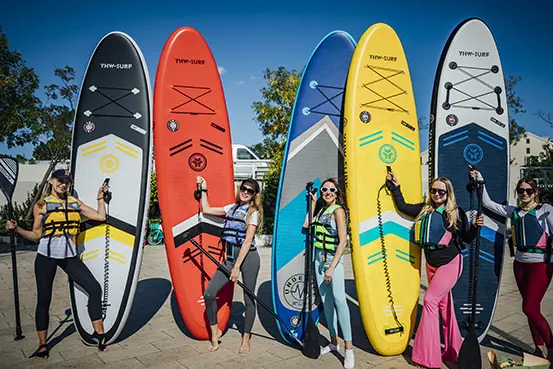Yes, Inflatable Surfboards Work—But It Depends on Your Goals
Inflatable surfboards are fully functional for specific users and conditions, though they have boundaries. Here’s how they perform:
1. They Work Great For:
- Beginners: Their wider, thicker design (from inflation) delivers superior stability—critical for learning to balance, catch small waves, and avoid wipeouts. New surfers often progress faster on inflatables than on narrow hardboards.
- Small-to-Medium Waves: They handle 1–4ft gentle swells (e.g., beach breaks, lake surf) easily. The flexible PVC core absorbs minor wave impacts, making rides smoother.
- Travel/Compact Lifestyles: Deflating to backpack size lets you take them on planes, buses, or store them in apartments—solving the “hardboard transport/storage” problem. They’re ideal for surf trips to remote spots.
- Casual/Multi-Use: Many double as stand-up paddleboards (SUPs) for calm water. If you want to surf occasionally and paddle recreationally, they’re a versatile choice.
2. They Struggle (or Don’t Work) For:
- Advanced Surfers Chasing Performance: Their soft core reduces rigidity, so they’re slower to accelerate, harder to turn sharply, and can’t handle fast, hollow waves (5ft+). Advanced riders needing precise control (e.g., carving, tube riding) will find them limiting.
- Large/Powerful Surf: In big, heavy swells, the board’s flexibility causes it to “bend” or lose stability—increasing wipeout risk. Hardboards (fiberglass/epoxy) are better for rough conditions.
3. Key Notes on Functionality:
- Durability Supports Long-Term Use: Military-grade PVC resists dings, rocks, and reefs—so they work reliably even in harsh shoreline conditions where hardboards might break.
- Setup Is a Small Tradeoff: Manual inflation takes 5–10 minutes (electric pumps cut this to 2–3 minutes). While it’s an extra step, it’s minimal compared to the benefits of portability and stability.




